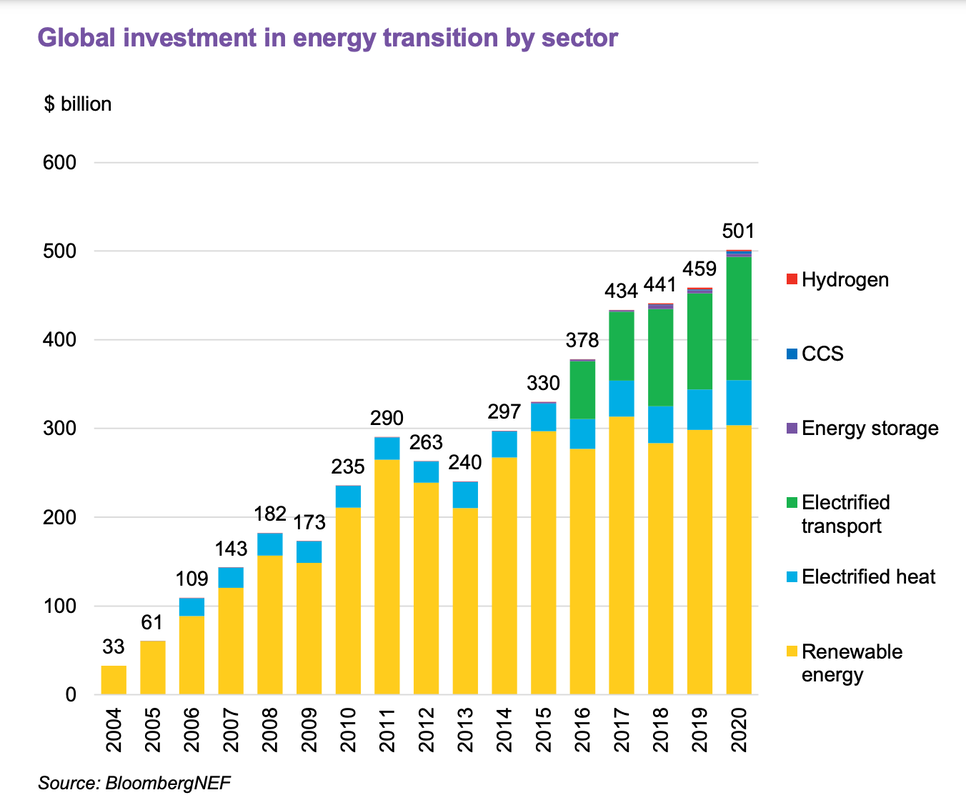BNEF's analysis shows that:
- Global investment in new renewable energy capacity (excluding hydro > 50MW) totaled $303.5 billion, an increase of 2% over 2019.
- Global investment in electric vehicles and associated charging infrastructure totaled $139 billion, an increase of 28% over 2019 and a new record.
- Other investment areas included: energy-efficient heat pumps ($50.8 billion), stationary energy storage technologies ($3.6 billion), carbon capture and storage ($3 billion), and hydrogen ($1.5 billion).
Albert Cheung, head of analysis at BNEF, said: “Our figures show that the world has reached half a trillion dollars a year in its investment to decarbonize the energy system. Clean power generation and electric transport are seeing heavy inflows, but need to see further increases in spending as costs fall. Technologies such as electric heat, CCS and hydrogen are only attracting a fraction of the investment they will need in the 2020s to help bring emissions under control. We need to be talking about trillions per year if we are to meet climate goals.”
Jon Moore, chief executive of BNEF, said: “The coronavirus pandemic has held back progress on some projects, but overall investment in wind and solar has been robust and electric vehicle sales jumped more than expected. Policy ambition is clearly rising as more countries and businesses commit to net-zero targets, and green stimulus programs are starting to make their presence felt. Some 54% of 2016 emissions are now under some form of net-zero commitment, up from 34% at the start of last year. This should drive increasing investment in the coming years.”
Charts illustrating the trends in energy transition investment are available via the following link.


 RSS Feed
RSS Feed